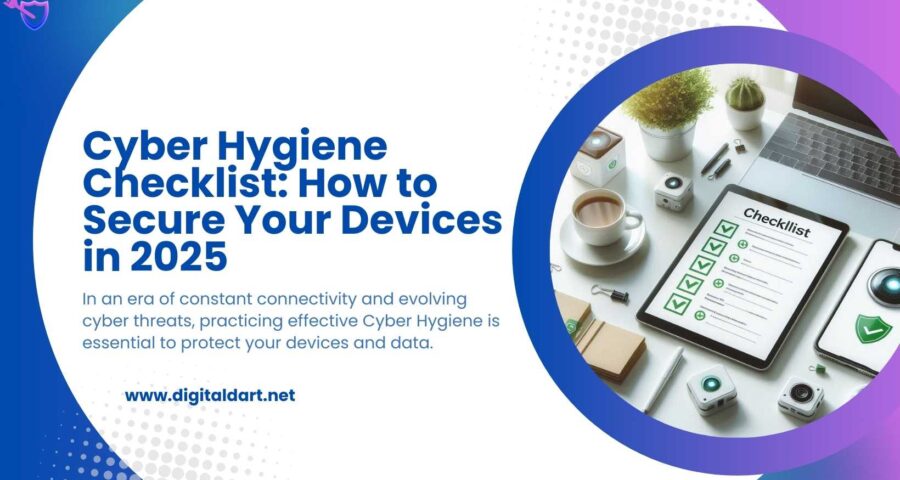Introduction
In an era of constant connectivity and evolving cyber threats, practicing effective Hygiene is essential to protect your devices and data. Cyber Hygiene encompasses the routines and best practices you follow to maintain your digital health, from updating software to securing network connections. As we move into 2025, a robust checklist will ensure you stay one step ahead of attackers.
Cyber Hygiene Fundamentals: Why It Matters in 2025
Cyber Hygiene in an Evolving Threat Landscape
With ransomware, supply-chain attacks, and zero-day exploits on the rise, 2025 demands heightened vigilance. Maintaining good Cyber Hygiene minimizes exposure to these sophisticated threats by closing common vulnerability windows before they can be exploited.
Hygiene Through Personal Habits
Just as you brush your teeth daily, daily hygiene habits—like reviewing login alerts and checking for software updates—build a strong defense. Small, consistent actions compound to dramatically reduce risk over time.
Cyber Hygiene Device Protection Basics
Cyber Hygiene and Software Updates
Keeping operating systems, applications, and firmware current is a cornerstone of Cyber Hygiene. Patches often include security fixes for known vulnerabilities, so enable automatic updates wherever possible to close gaps immediately.
Cyber Hygiene with Strong Authentication
Passwords alone are no longer enough. As part of Cyber Hygiene, implement multi-factor authentication (MFA) on every account you use. Combining something you know (a password) with something you have (a hardware token or mobile app) thwart most credential-based attacks.
Cyber Hygiene for Secure Network Connections
Never connect to public Wi-Fi without protection. Integrate the best practices by using a trusted VPN to encrypt your traffic, preventing eavesdropping and malicious man-in-the-middle attacks.
Cyber Hygiene Advanced Practices
Hygiene and Regular Backups
No system is invulnerable. As part of your Hygiene, schedule automated backups to an off-site or cloud location. Test your restore process quarterly to ensure you can recover swiftly from data loss or ransomware incidents.
Cyber Hygiene with Endpoint Security
Install reputable antivirus and endpoint detection and response (EDR) tools on all devices. These solutions form a critical layer of Cyber Hygiene, identifying malware and suspicious behaviors before they can cause harm.
Hygiene Email and Phishing Protection
Phishing remains a leading attack vector. Enhance your digital hygiene by using email filters, domain-based authentication (SPF, DKIM, DMARC), and user training to recognize and report deceptive messages.
Hygiene for Mobile and IoT Devices
Hygiene on Mobile Device Management
Smartphones and tablets carry just as much personal and work data as desktops. Enforce strong Hygiene on mobile by enabling device encryption, locking screens with PINs or biometrics, and installing apps solely from official stores.
Hygiene in IoT Configuration
Internet-of-Things devices—cameras, smart speakers, thermostats—often ship with default credentials and outdated firmware. Secure your IoT ecosystem by changing default passwords, segmenting them on a separate network, and applying updates regularly.
Hygiene in Remote Work Environments
Hygiene on Home Networks
Home routers are prime targets for attackers seeking unauthorized access. Strengthen your Hygiene by changing default router credentials, enabling WPA3 encryption, and regularly reviewing connected devices.
Hygiene with VPN Usage
A reliable VPN is a critical part of Hygiene for remote workers. By routing your traffic through an encrypted tunnel, a VPN shields sensitive company communications from interception—even on insecure networks.
Cyber Hygiene Monitoring and Continuous Improvement
Logging and Alerts
Enable system and application logging on all devices. Incorporate a centralized log management tool to collect and analyze logs in real time, triggering alerts for anomalies like repeated login failures or unexpected configuration changes.
Security Audits
Perform periodic security audits and vulnerability scans as part of ongoing Hygiene. Whether using automated tools or engaging third-party specialists, regular assessments help you uncover and remediate gaps before attackers can exploit them.
Conclusion
Maintaining rigorous Hygiene is no longer optional; it’s a necessity for anyone who values their digital security. By following this 2025 checklist—covering everything from updates and authentication to backups, endpoint protection, and VPN use—you’ll significantly reduce your risk profile.
For comprehensive protection of both your network and your remote devices, partner with Digital Dart. As a leading VPN service provider, Digital Dart ensures that your internet traffic remains encrypted and secure, making your Hygiene practices even more effective.
Secure your digital life today.
Contact Digital Dart now for a free consultation and discover how our VPN solutions enhance your overall hygiene.


Leave a Reply